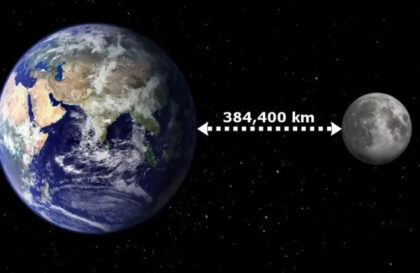Seismic events occur on the Moon, called lunar earthquakes or lunar seismic waves. These events are caused by the activity of internal processes, such as the cooling and compression of the inner layers of the Moon, as well as the influence of gravitational forces from the Earth.
The first observations of lunar seismic events were recorded by the astronauts of the Apollo missions in the 1960s and 1970s. They installed special seismometers on the surface of the moon that recorded earthquake data.
Lunar seismic waves can be caused by various factors, including tectonic activity, volcanic activity, geological processes, and even the impact of meteorites.
Space meteors increase the mass of the moon?
Space meteors entering the Earth’s atmosphere quickly die out, unlike the Moon, where their fall causes explosions due to the absence of an atmosphere. Recent calculations by NASA scientists have shown that the Moon is regularly hit by meteorite impacts, causing thousands of lunar seismic events and impacts. This also leads to an increase in the mass of the Moon by several tons annually.

Within a few years, seismometers recorded nearly 3,000 moonquakes, 1,700 meteoric impacts, and the fall of nine spaceships. The mass of the moon increases in this way by several tons every year.
The mass of the moon is 7.34 * 1019 tons. If we assume that it gets heavier by 10 tons every year due to meteorites, then its mass will double in 7.34 * 1018 years (7.34 quintillion years). But sometimes things happen faster than you expect.
What happens if the moon gets bigger due to meteorites?
If the moon’s radius doubles…
The moon would look much brighter, about 4 times brighter than it is now.

The mass of the moon would increase 8 times (at the same density). It will be the most massive moon in the solar system. It will be large enough to create a molten core, like Ganymede, by its gravitational forces.
Then the Moon could have a magnetic field, like the Earth.
This would cause plate tectonics on the Moon and associated (slow) erosion that would wear away surface features such as craters. Perhaps the surface will stretch and become smoother.
It will come close to being able to capture its atmosphere, albeit probably only very thin of the heavier molecules like CO2.
Tides on Earth will be 8 times higher and lower. For cool surfers beauty! And for the coastal regions a disaster. The area of settlement in the coastal zone of the oceans and seas would change.
Floods and seismic activity will be much stronger.
There will likely be other climate effects, such as a lot of weather problems, as our water would simply fly away and all the clouds in the sky would rise higher.
Image credit:
https://www.womanandhome.com
https://www.slashgear.com
https://www.timeanddate.com






